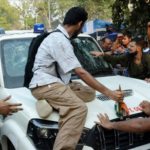In the first 100 days of his third term, Prime Minister Narendra Modi has continued to assert his leadership while navigating the complexities of helming a coalition government. The early days of Modi 3.0 have been marked by significant developments in policy-making, legislative reforms, and the strategic management of his party and alliance partners. With a clear mandate from the 2024 elections, Modi has attempted to balance continuity with bold shifts in governance, signaling that his third term will not be a mere continuation of the previous terms but an era of redefinition.
A Coalition Government in a New Era: The Challenges
While Modi 2.0 consolidated his hold over governance with an overwhelming mandate, Modi 3.0 has presented its own unique set of challenges. The internal dynamics of his party, the Bharatiya Janata Party (BJP), and the complexities of managing alliances within the National Democratic Alliance (NDA) have required a more nuanced approach. While the appointments within his Prime Minister’s Office (PMO) and ministries have remained largely consistent with his previous terms, the pressures within the coalition have been felt, particularly as Modi pushes through ambitious legislation and policy reforms.
1. Managing Coalition Allies:
One of the key features of Modi’s third term is his effort to maintain a cohesive and functional coalition, even as some regional partners assert their own agendas. The BJP’s dominant position in the NDA has at times strained its relationships with smaller parties, with some demanding greater representation and policy influence. The early days of Modi 3.0 have seen behind-the-scenes negotiations to keep these regional partners on board while ensuring that the BJP retains its leadership over the alliance.
2. Party Management and Ministerial Appointments:
Modi has also had to manage internal party dynamics within the BJP. Several senior leaders who were prominent in Modi 2.0 have continued to hold key positions, signaling continuity in his governance approach. However, there has also been a push to bring in younger, more dynamic leaders, reflecting Modi’s vision for the future of the party. The delicate balance of rewarding loyalty while ushering in fresh talent has been a central theme in the early days of Modi 3.0.
Key Legislative Reforms in Modi’s Third Term
One of the hallmarks of the first 100 days of Modi’s third term has been the aggressive push for legislative reforms. These have been aimed at consolidating economic growth, modernizing infrastructure, and improving the ease of doing business, while also addressing long-standing social and governance issues.
1. The New Personal Data Protection Bill:
Among the standout pieces of legislation introduced early in Modi 3.0 is the Personal Data Protection Bill. This bill aims to modernize India’s data protection framework in light of the digital revolution and increasing concerns around privacy and data security. The bill proposes stringent guidelines for companies handling personal data and mandates the localization of certain types of data, signaling the government’s intent to safeguard citizens’ data from foreign exploitation.
2. Reforms in the Agricultural Sector:
Building on the reforms introduced in his second term, Modi’s government has continued its focus on agriculture. The introduction of new Agricultural Market Reforms aims to modernize and liberalize agricultural markets, giving farmers more freedom to sell their produce beyond traditional mandis. These reforms have faced pushback from certain sections of the farming community, but Modi’s government has remained steadfast in its commitment to agricultural modernization, promising long-term benefits for farmers.
3. Labor Code Reforms:
In an effort to boost employment and make labor markets more flexible, Modi’s government has also pushed forward with labor code reforms. These reforms aim to consolidate and streamline existing labor laws, making it easier for businesses to hire and operate, while also ensuring that workers’ rights are protected. This has been a key policy focus, as the government seeks to position India as a global manufacturing hub.
4. Judicial and Administrative Reforms:
In line with his broader goal of improving governance efficiency, Modi has also introduced reforms aimed at modernizing the judicial system and reducing bureaucratic red tape. The Judicial Accountability and Transparency Bill seeks to make the judiciary more accountable while ensuring faster delivery of justice. Meanwhile, administrative reforms are being implemented to streamline government functioning, reduce delays, and improve the overall efficiency of governance.
Foreign Policy and Global Diplomacy
While domestic reforms have been a key focus, the first 100 days of Modi 3.0 have also been marked by a proactive foreign policy. India’s stature on the global stage has continued to rise, with Modi leveraging India’s growing economic and geopolitical importance to build stronger alliances and partnerships.
1. India’s Role in Global Diplomacy:
One of the key features of Modi’s third term has been India’s assertive diplomacy on the global stage. In the first 100 days, Modi has made several high-profile visits to key global capitals, reaffirming India’s role as a major player in international affairs. His government has continued to strengthen ties with traditional allies like the United States, while also reaching out to emerging powers and regional neighbors.
2. Defense and Strategic Partnerships:
India’s defense and strategic partnerships have also been a focus during the early days of Modi’s third term. The government has continued to build strong defense ties with countries like France, Russia, and the U.S., while also focusing on indigenizing defense production through the Make in India initiative. This is part of a broader strategy to modernize India’s defense forces and enhance the country’s strategic capabilities in a rapidly changing global security environment.
3. Climate Change and Sustainable Development:
Another significant aspect of Modi’s foreign policy agenda has been India’s role in combating climate change. Modi’s government has continued to advocate for climate action on the global stage, while also emphasizing the need for sustainable development domestically. India’s commitment to renewable energy and green technology has been a key focus, with the government pushing for greater investments in solar, wind, and other clean energy sources.
Economic Growth and Development: Modi’s Vision for India
Economic growth remains central to Modi’s vision for India, and the first 100 days of his third term have seen the continuation of ambitious development projects aimed at transforming India’s economy.
1. Infrastructure Development:
One of the cornerstones of economic agenda has been infrastructure development. From highways and railways to ports and airports, the government has continued to invest heavily in modernizing India’s infrastructure. Projects like the National Infrastructure Pipeline and Bharatmala are central to Modi’s vision of transforming India into a global economic powerhouse.
2. Digital India and Technological Innovation:
The Digital India initiative has been a key focus of governance, and it has continued to gain momentum in his third term. The government has prioritized technological innovation as a means of driving economic growth and improving governance. Initiatives like 5G rollouts, the expansion of digital services, and investments in tech start-ups have been central to this push.
3. Boosting Manufacturing and Job Creation:
In an effort to create jobs and boost India’s industrial base, Modi’s government has continued to emphasize manufacturing through the Make in India initiative. The government has also introduced policies aimed at encouraging foreign direct investment (FDI), with the goal of making India a global manufacturing hub.
Navigating Policy Challenges and Opposition
Despite the clear mandate for Modi 3.0, the government has faced challenges, both from political opposition and within certain sectors of society. Policy decisions, particularly in agriculture and labor reforms, have sparked protests and criticism, requiring the government to balance reform with negotiation.
1. Agricultural Protests:
As the government continues to implement agricultural reforms, it has faced resistance from certain sections of the farming community. Protests over agricultural policies have continued, with farmers’ unions demanding a rollback of reforms. Modi’s government has engaged in dialogue with these groups, but the issue remains a contentious one, with broader implications for rural India.
2. Political Opposition and Legislative Battles:
While government enjoys a strong majority in Parliament, it has faced pushback from opposition parties on several key legislative initiatives. The opposition has sought to challenge the government’s policies on a range of issues, from economic reforms to foreign policy. Legislative battles are expected to intensify as the government moves forward with its ambitious agenda.
Conclusion: A Defining Third Term for Modi’s Leadership
The first 100 days of Modi 3.0 have set the tone for what promises to be a defining term in India’s political history. With a clear mandate and an ambitious agenda, Modi’s government is pushing the boundaries of governance, policy reform, and coalition management.
While challenges remain, particularly in the areas of agricultural reform and labor rights, Modi’s government has shown a determination to stay the course and implement its vision for India. As India navigates a rapidly changing global and domestic landscape, Modi’s leadership will continue to shape the country’s future in significant ways. Whether it is through economic transformation, technological innovation, or global diplomacy,poised to leave a lasting impact on India’s governance and development trajectory. ALSO READ:-Samsung’s Stance on Strikes in India: “No Work, No Pay” Policy and Its Implications 2024





